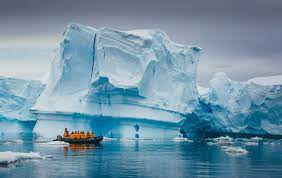Microplastics In Antarctica Snow:

Scientists have found Microplastics — plastic pieces smaller than a grain of rice — in freshly fallen Antarctic snow for the first time, which can influence the climate by accelerating melting of ice.
- Previous studies have found that microplastics have negative impacts on the health of the environment, limiting growth, reproduction, and general biological functions in organisms, as well as negative implications for humans.
- Finding microplastics in fresh Antarctic snow highlights the extent of plastic pollution into even the most remote regions of the world.
- Researchers gathered samples of snow from 19 different sites in the Ross Ice Shelf in Antarctica and discovered plastic particles in all of them.
- There were 13 different types of plastic found, with the most common being PET (Polyethylene Terephthalate), commonly used to make soft drink bottles and clothing. The possible sources of microplastics were examined.
- An average of 29 microplastic particles per litre of melted snow, which is higher than marine concentrations reported previously from the surrounding Ross Sea and in Antarctic sea ice.
- Microplastics may have travelled thousands of kilometres through the air, however it is likely that the presence of humans in Antarctica has established a microplastic ‘footprint’.




